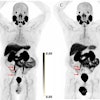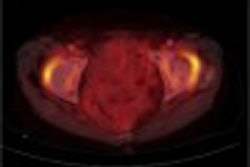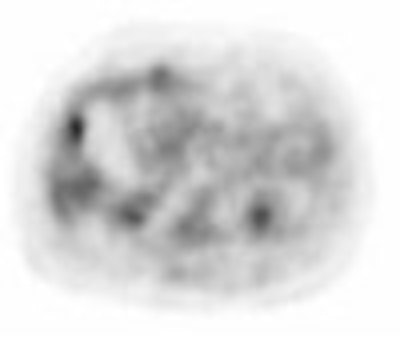
By flagging the unexpected hot spots in whole-body PET exams, and pestering the referring physicians to follow them up, Dr. Harry Agress Jr., has spurred the identification of 30 completely unsuspected malignant or premalignant tumors in less than two years.
The director of nuclear medicine at Hackensack University Medical Center in New Jersey, Agress has also spent a lot of time studying normal variants found on PET. With a positive "hit" rate of at least 71% on the unexpected findings he has called, he’s earned added confidence from referring physicians.
In a report slated for the February issue of Radiology, Agress gives the straightforward rendering of his experience, which he also outlined at the 2002 Academy of Molecular Imaging meeting in San Diego. In a more recent interview with AuntMinnie.com, Agress described the real effort required to convince other physicians that his findings were important.
"A lot of this has to do with the personal communications and the following up -- even beyond taking a negative result," said Agress, who is also a partner in the Hackensack Radiology Group.
For example, in one case a patient evaluated because of a solitary pulmonary nodule (SPN) had a very intense focus of hypermetabolism posterior to the bladder on her whole-body FDG-PET scan. But follow-up MRI by another radiology group was reported back as negative, which Agress had trouble accepting.
He asked the referring physician to let him look at the MR image, and spotted something in the rectum he believes the others probably interpreted as stool. Armed now with both a PET and an MR image, Agress again called the referring doctor.
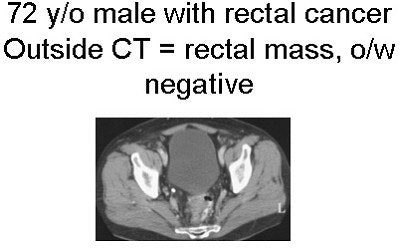
"I said, ‘I think this woman has a rectal mass,’" Agress recalled. "And it was as though I was irritating: all I was doing was causing grief for this physician." But the physician ordered a follow-up endoscopic exam that found a rectal carcinoma.
Another case involved a woman whose whole-body FDG-PET scan for a lower right lobe SPN showed a hot spot in her left breast. The woman heeded Agress’ advice to get a follow-up mammogram, which she obtained at another institution, but it was a screening exam rather than the directed exam Agress had advised -- and it was deemed negative.
Agress then asked one of his colleagues to follow up with a spot compression view mammogram. "I said to her primary doctor, ‘Look, we’ll do this for free just so we can see if there is something significant."
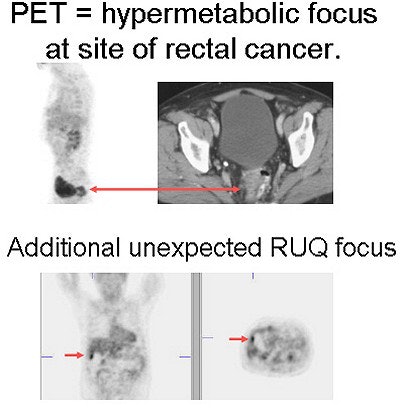
After seeing a subtle abnormality on the mammogram, Agress’ colleague followed up with an ultrasound exam and biopsied the abnormality on the spot. The biopsy revealed invasive ductal carcinoma; surgical excision of tumor was performed and no lymph node involvement was found.
"This made me feel terrific," said Agress. "I’m sure (the patient) was not happy to find this out initially, but I would assume after time she would understand that we had found something very early...before it was palpable, before a routine screening mammogram would have caught it."
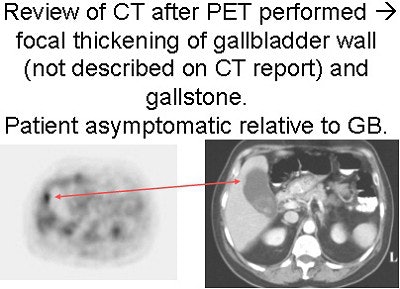
Agress started keeping a simple log on his unexpected findings -- abnormal incidental foci of hypermetabolism that are unlikely to be related to the neoplasm for which the patient was being scanned -- in November 2000.
His Radiology article, co-authored by Dr. Benjamin Cooper, summarizes his findings through July 2002. Among the 1,750 patients with suspected or known cancers who underwent initial whole-body FDG-PET scans during those 21 months, 58 unexpected foci of hypermetabolism were found in 53 patients (3.3%).
Thanks in part to Agress’ pestering, 42 of the 58 hot spots were ultimately evaluated by histopathology; the others were in patients who either refused further exams or fell out of contact.
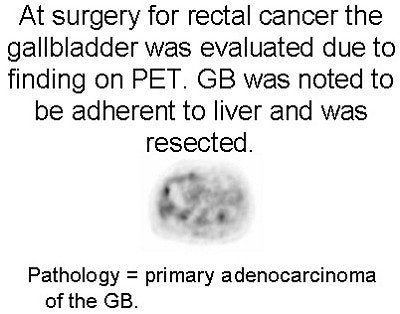
Out of the 42 evaluated foci, 30 (71%) were found to be either malignant or premalignant tumors, including 18 colonic adenomas, three colonic adenocarcinomas, two breast carcinomas, two laryngeal squamous cell carcinomas, one gallbladder carcinoma, one endometrial adenocarcinoma, one ovarian adenocarcinoma, one fallopian tube adenocarcinoma, and one papillary thyroid carcinoma.
Another three of the remaining benign findings were considered clinically important and "resulted in surgical or medical treatment that was not considered prior to FDG-PET," the authors wrote.
Benign findings included one case of pigmented villonodular synovitis, one case of combined acute and chronic cholecystitis, one case of Hashimoto thyroiditis, one thyroid adenoma, one case of focal gastritis, one case of prostatitis, two cases of rectal inflammation or hemorrhoids, and one hyperplastic colonic polyp.
In sum, Agress said, his experience with pursuing unexpected findings has been very satisfying and even exciting.
"I found that it made PET more interesting because it made me a believer in the fact that even subtle findings on PET can be significant," Agress said. "It made me more confident in my reading of PET because we did go to the point of getting these things biopsied, and it gave me a better feeling for what I call and what I won’t call on a PET scan."
In the process he has also developed a closer working relationship with referring physicians, most of whom now appear to share his interest in following up unexpected findings.
"In the beginning especially, I had to make multiple phone calls usually," said Agress. "It’s dramatically easier now."
By Tracie L. ThompsonAuntMinnie.com staff writer
January 16, 2004
All images and captions courtesy of Dr. Harry Agress, Jr.
Related Reading
FDG-PET, scintigraphy offer a break in fever of unknown origin, August 22, 2003
PET proves versatile in imaging gynecologic cancer, August 4, 2003
FDG-PET trumps CT for colon cancer staging, May 23, 2003
PET protocols from head to toe, May 5, 2003
Unexpected FDG-PET foci may signal subclinical tumors, December 26, 2002
Copyright © 2004 AuntMinnie.com


